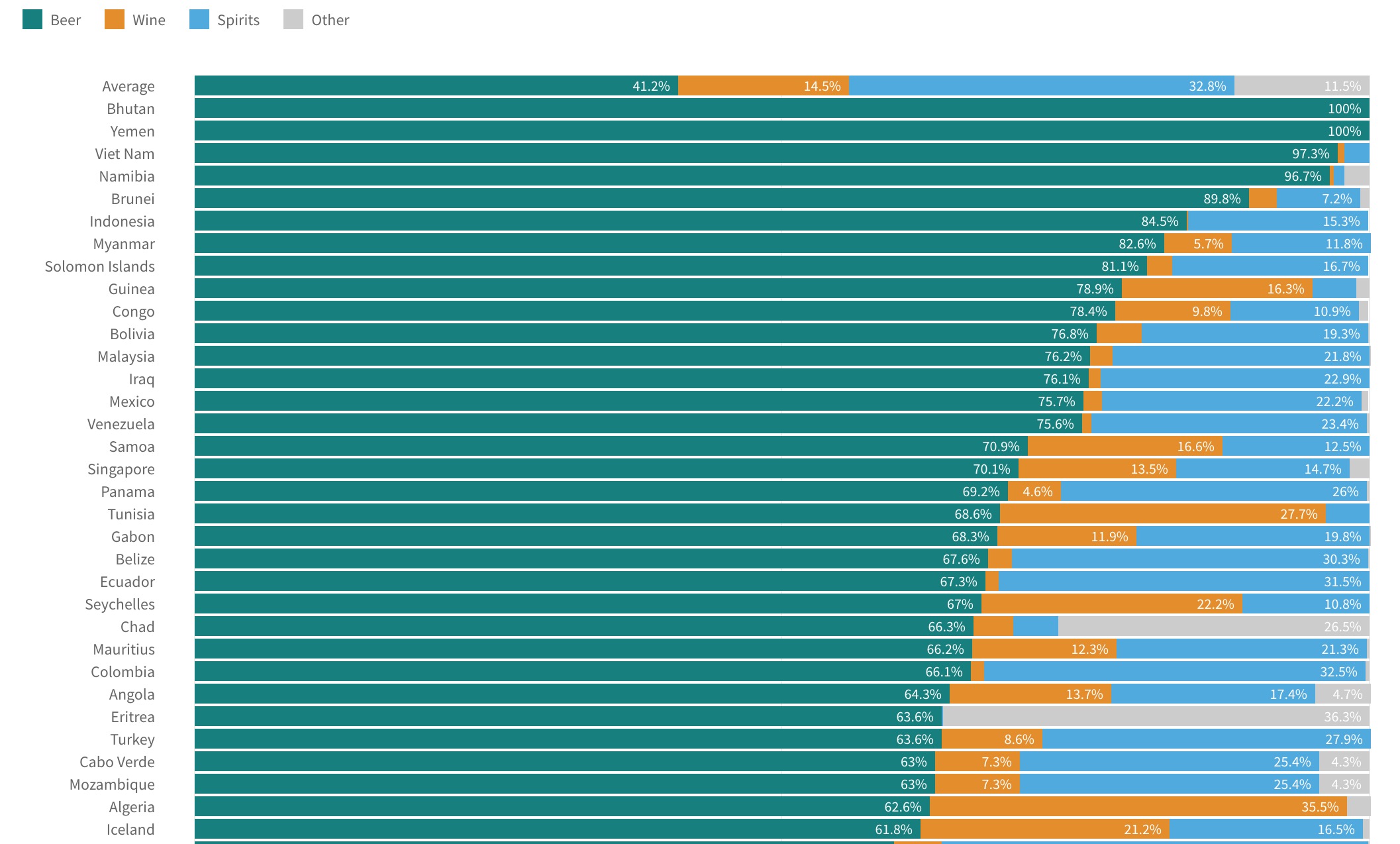
Visualizing World Alcohol Consumption: How Much Does Each Country Drink?
A few weeks ago I posted about gender gaps in alcohol consumption around the world.
In some countries — South Korea, for example — men and women consume quite different amounts of booze, according to the World Health Organization. Fueled by a love for soju, South Korea's men are among the heaviest drinkers in the world, consuming about 78 grams per day — nearly twice as much as other men on average. Its women drink only slightly more than their counterparts abroad, on average.
But that data only averaged daily consumption, by country, among people who list themselves as "drinkers". The organization also has estimates about per-capita consumption amounts based on countries' import, export and sales data, normalized with their adult populations. Depending on your question, that might be more useful information.
Those data, which also offer a breakdown of alcohol types (beer, wine, spirits and "other"), tell a different story. Instead of leading the world, by that measure South Koreans rank farther down a list of 196 countries: 35th.
Belarus tops that list with a per-capita rate of about 17.3 liters of alcohol consumed annually. South Korea's rate, by comparison, is about 9.3 liters per person annually, and America's rate is around 8.7 liters. Both are still relatively high compared to rest of the countries in the organization's database. Of course, the predominantly Muslim countries in the Middle East drink next to nothing, at least officially.
Here's a map showing the consumption total for each country, with darker shades representing more drinking:
The total consumption is only part of the story, however. Western Europe, for example, generally drinks more wine (Portugal and France top the list) and beer (Austria and Germany are high on the list). Eastern European generally prefer spirits (hello Russia, Belarus and Bulgaria).
Some countries in Africa like the organization's category of "other" more than conventional types of booze, as does South Korea. I suppose that's a reference, at least in Uganda's case, to waragi, a moonshine made from bananas. South Koreans drink a lot of soju, a distilled rice liquor that doesn't neatly fit into the beer, wine or spirits categories.
Explore the data, separated by regions, in this table: